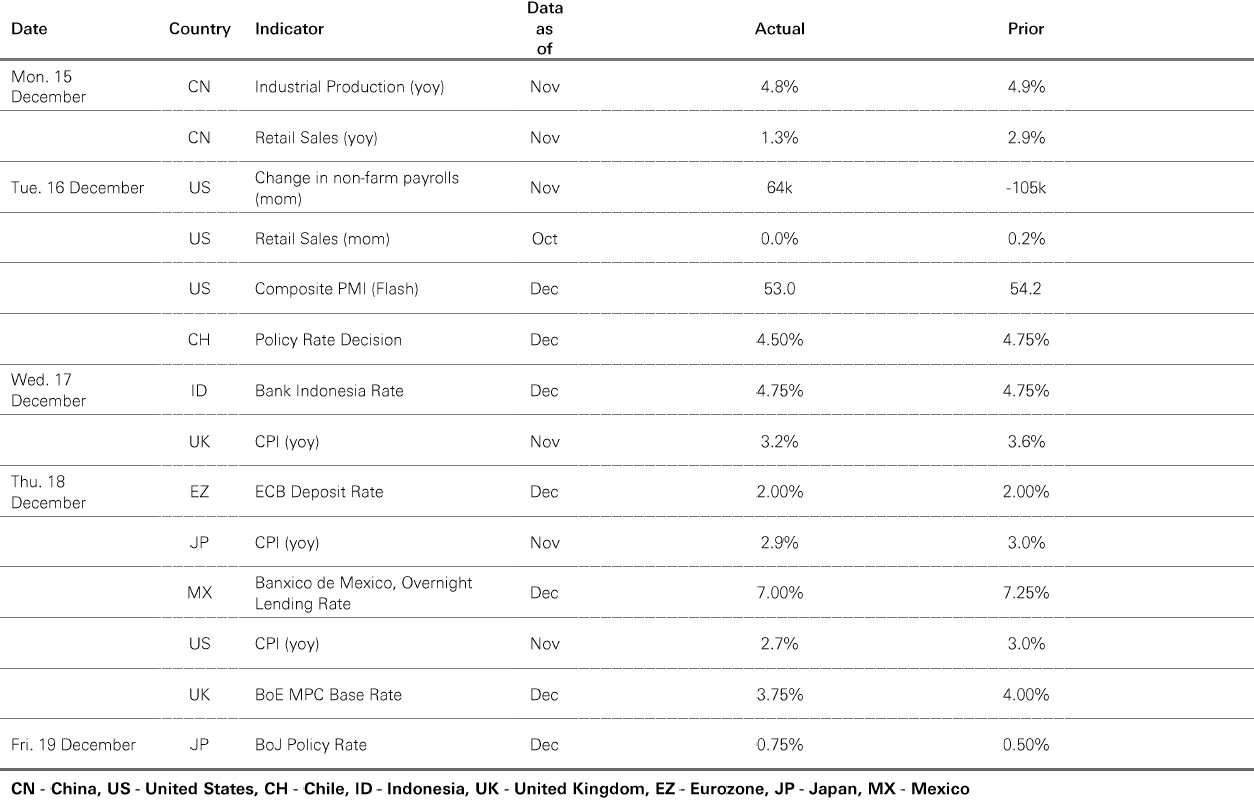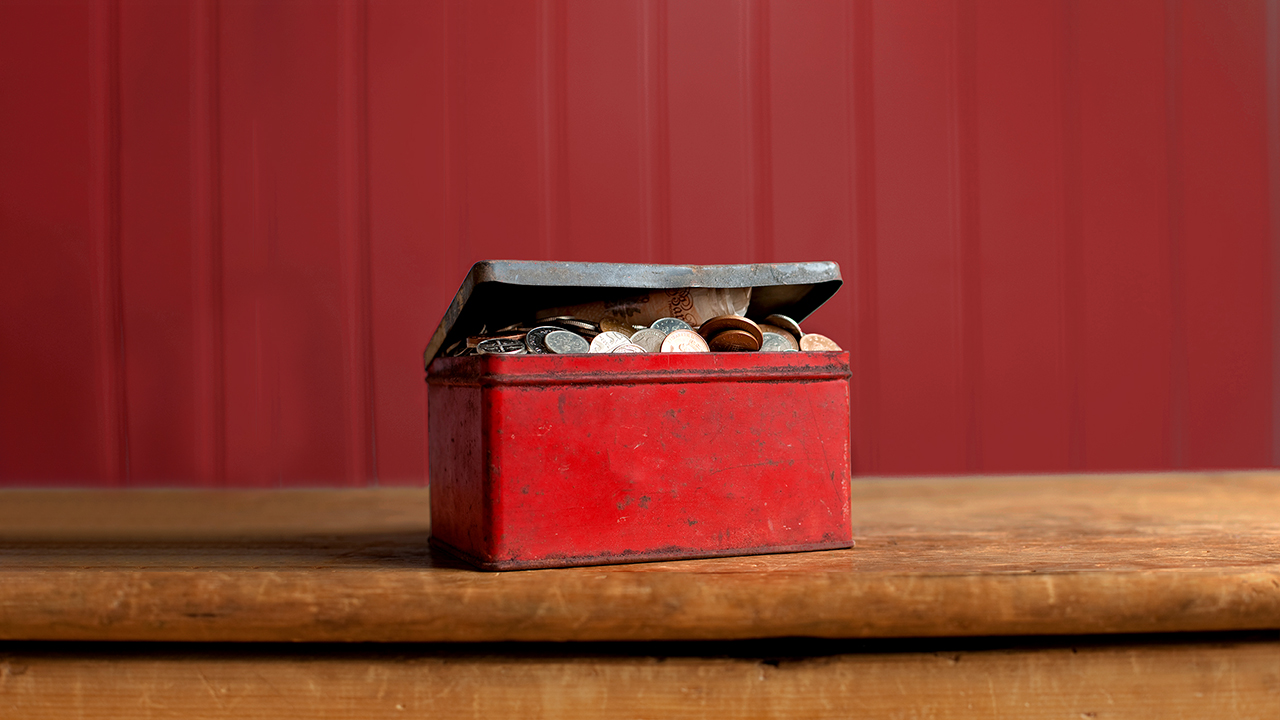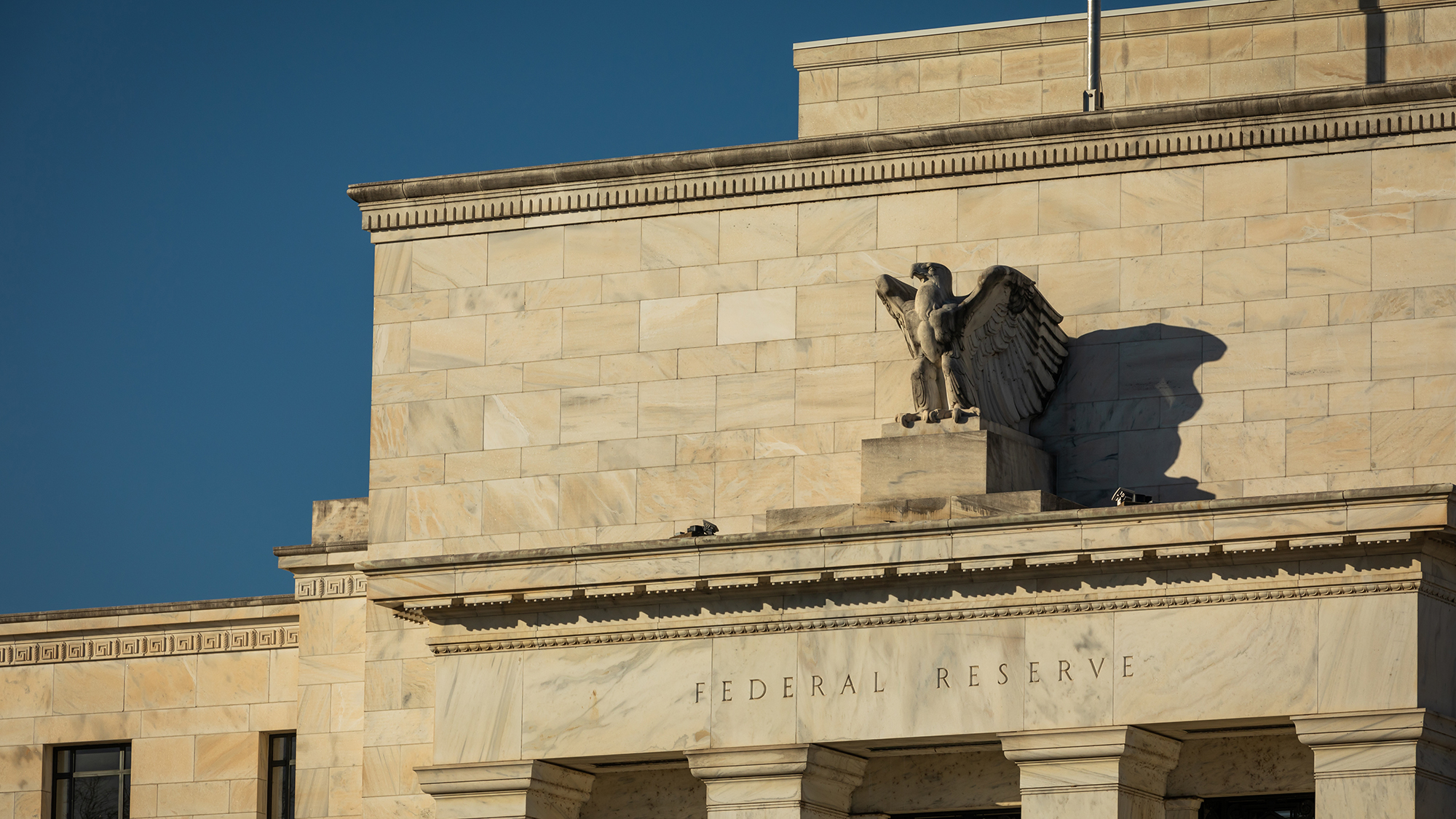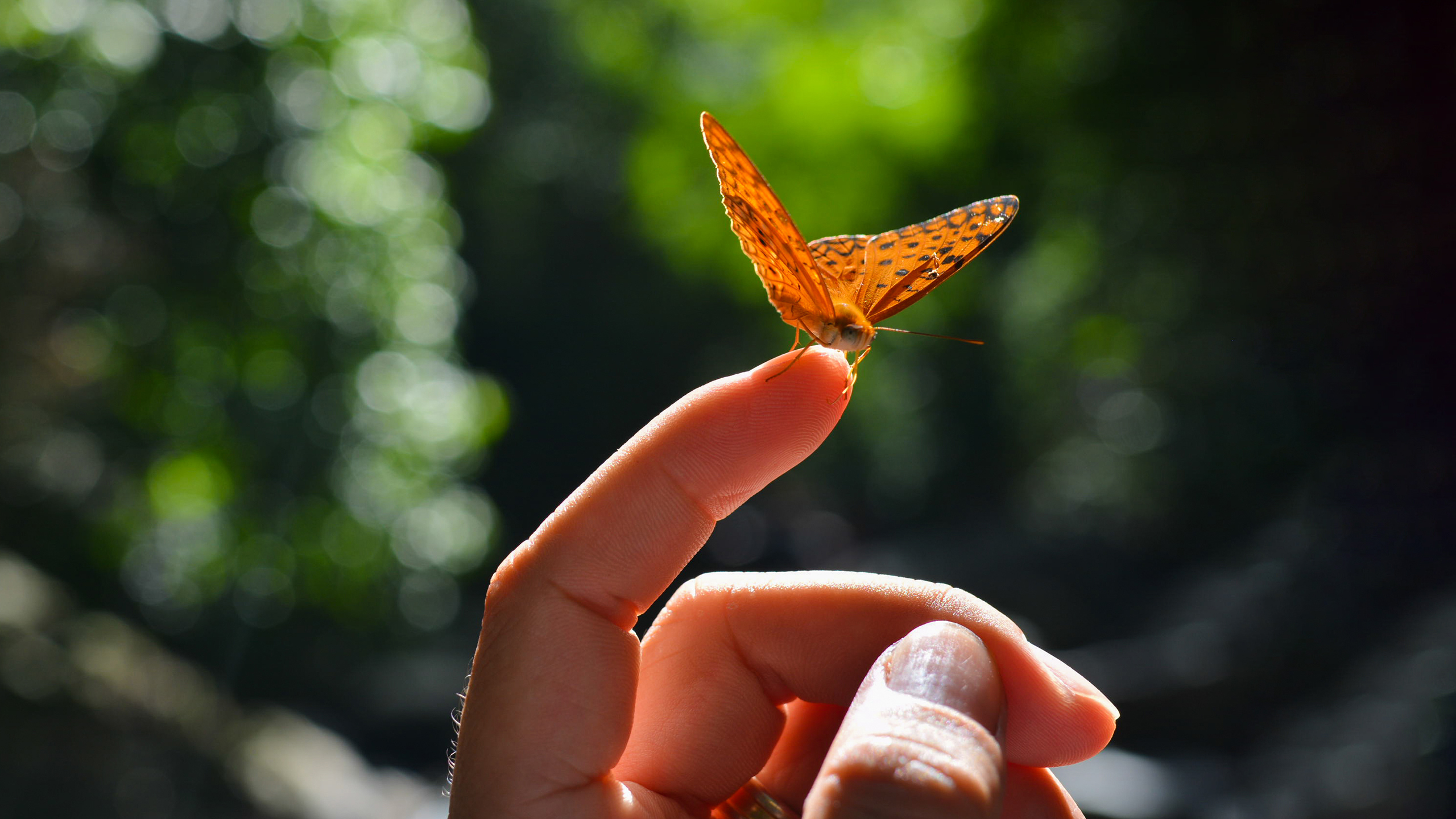
22 December 2025

2025 has been an impressive year for global asset markets, and that’s continued in Q4 – although bouts of volatility are still testing investors’ nerves. This quarter, the uncertainty over US tariffs that dominated markets earlier this year continued to fade. By contrast, the focus on the AI boom intensified. Global equity returns and risk-on sentiment saw more broadening out, with strong returns in EAFE and emerging markets, and the value factor outperforming growth.
Emerging market stocks have been a highlight of the 2025 rally, and Q4 has seen an interesting shift in leadership. India – which has lagged most markets this year, notably in Asia – has performed well and outpaced China (which has delivered otherwise stellar gains in 2025). This jockeying for performance leadership between the two Asian giants could be worth watching in 2026. Elsewhere, markets across Asia, LatAm, and Frontier regions are also on course to close the quarter – and the year – as strong global performers.
Other winners in Q4 include EM local currency bonds, which have benefitted from high real yields, solid fundamentals, and a weaker US dollar. Gold remains one of the year’s best performers. But among the laggards, oil has continued to trend lower amid a supply surplus. And cryptocurrencies have also sold off, potentially unsettling retail investors that have otherwise been keen buyers in markets this year.
What comes next? Markets have been risk-on in 2025, but a “role reversal” in performance drivers can be expected in 2026. Strong performance in global stocks and emerging markets has been driven by re-pricing and improving sentiment, but further gains in 2026 are likely to depend much more on improving profits.
As this is the last Investment Weekly of the year, it’s worth looking at some of the key issues facing investors in 2026:
#1. Macro: A key question is the resilience of the US economy to a cooling labour market and weak consumer dynamics. Tech capex and policy support should keep growth robust. But does this drive inflation higher? And what does it mean for Fed cuts? The case for “diversifying the diversifiers” stems from these concerns.
#2. AI: Bubble fears are likely to feature in market conversations. There is a good chance that AI-related stocks continue to do well, although a more discriminate eye from investors could mean increasingly divergent performance. The big risk is that tech profits and returns on investment disappoint. If profits growth can pick up outside the US, the case for “broadening out” in 2026 looks good.
#3. Emerging Markets: 2025 was undoubtedly a vintage year for EM returns. But 2026 could be more challenging: a softer US dollar is not guaranteed, and China still faces deflationary challenges. But the good news is that EM assets now look structurally safer and less volatile, thanks to the efforts to derisk economies and improve policy frameworks. And as the global tech theme broadens out to Asian markets, AI is boosting many (cheaper) tech names.
The value of investments and any income from them can go down as well as up and investors may not get back the amount originally invested. Past performance does not predict future returns. The level of yield is not guaranteed and may rise or fall in the future. For informational purposes only and should not be construed as a recommendation to invest in the specific country, product, strategy, sector, or security. Diversification does not ensure a profit or protect against loss. Any views expressed were held at the time of preparation and are subject to change without notice. Any forecast, projection or target where provided is indicative only and is not guaranteed in any way. Source: HSBC Asset Management, Bloomberg, Macrobond, *Private Credit: Latest available data from Bloomberg Debt Private Equity Index. Data as at 7.30am UK time 19 December 2025.
Two themes dominated discussions around the US economy in 2025 – tariffs and AI. Coming into the year, growth expectations were robust and rising. But investors got a shock on 2 April – “Liberation Day” – when President Trump announced swingeing tariffs. Markets buckled and growth expectations were cut sharply. Both have subsequently recovered, in part reflecting the rowing back of some duties. But the Yale Budget Lab estimates that the effective tariff rate is still at its highest since the 1930s, and, even if the Supreme Court invalidates the reciprocal tariffs, it will remain at its highest since the 1940s. Tariffs remain a negative shock for the economy. |
But rampant AI investment has provided a counterbalance. Without this capex, alongside AI-driven equity wealth gains, the economy may have lapsed into a recession. Rising unemployment requires monitoring, but the base case is that growth holds up and rebalances. And we shouldn’t ignore the upside risk of a more generalised AI-driven boom. Overall, the macro backdrop favours a modestly pro-risk asset allocation in 2026.

The stellar performance of emerging market assets has been a highlight of investment markets this year. Once seen as a high risk, high beta play, EM bond volatility is now lower than in developed markets. But was the strong EM performance down to luck, or a step-up in quality? It’s a bit of both. A softer US dollar was undoubtedly a tailwind in 2025, helping to loosen financial conditions, giving central banks space to ease policy, and encouraging capital to flow downhill. What’s more, there is still space for further policy easing in EMs in 2026 – although many will now be taking their cues from the Fed. |
Beyond that, economic derisking in the shape of macro reforms, stronger institutions, and more developed financial markets have also made EM assets structurally safer and less volatile. While EMs certainly face challenges next year – and further policy support is expected, particularly in China – these improvements, and this year’s performance, show that the old EM stereotypes may not fit the facts anymore.

Surging profits growth and feverish AI enthusiasm have driven strong performances in large-cap technology stocks this year, pushing US markets to new highs. The outlook for next year is being supported by expectations that the technology and communications services sectors will jointly contribute 55% of total profits growth. US stock and sector concentration is at its highest in 25 years. But while this can be a source of volatility, it’s also the case that larger companies can be more diversified, more adaptable, and have stronger financing. Plus, recent winners can keep winning. For markets, the bigger question is around high mega-cap tech valuations, and whether profits delivery can match rampant expectations. Given the scrutiny on phenomenal capex spending on AI infrastructure, they face a high bar to continue meeting, and beating, profits expectations. |
A core scenario of a coming together of global GDP and profits growth in 2026 suggests that stock market broadening out can continue next year. In global tech, that means regions like EAFE, Asia and emerging markets may be better placed as a source of both value and profits upside.

Past performance does not predict future returns. The level of yield is not guaranteed and may rise or fall in the future. For informational purposes only and should not be construed as a recommendation to invest in the specific country, product, strategy, sector, or security. Diversification does not ensure a profit or protect against loss. Any views expressed were held at the time of preparation and are subject to change without notice. Index returns assume reinvestment of all distributions and do not reflect fees or expenses. You cannot invest directly in an index. Any forecast, projection or target where provided is indicative only and is not guaranteed in any way. Source: HSBC Asset Management. Macrobond, Bloomberg. Data as at 7.30am UK time 19 December 2025.


Source: HSBC Asset Management. Data as at 7.30am UK time 19 December 2025. For informational purposes only and should not be construed as a recommendation to invest in the specific country, product, strategy, sector or security. Any views expressed were held at the time of preparation and are subject to change without notice. Any forecast, projection or target where provided is indicative only and is not guaranteed in any way.
Hopes of a year-end Santa Rally in global stocks remained on hold last week as investors digested a series of central bank meetings, a soft US employment report, and benign US inflation data. The US dollar was little changed against major currencies, while 10-year US Treasury yields fell. US stocks got off to a weak start but strengthened later in the week. In Europe, the Bank of England lowered rates by 0.25% but signalled further easing will become a “closer call”, while the European Central Bank upgraded its 2026 eurozone inflation forecast. The Euro Stoxx 50 index fell modestly. In Asia, weaker tech stocks weighed on Japan’s Nikkei 225, with Korea’s Kospi index also dragged down by tech sector volatility. The Hang Seng, China’s Shanghai Composite and India’s Sensex were all weaker through the week. Elsewhere, gold extended recent gains while oil prices saw further weakness.





We’re not trying to sell you any products or services, we’re just sharing information. This information isn’t tailored for you. It’s important you consider a range of factors when making investment decisions, and if you need help, speak to a financial adviser.
As with all investments, historical data shouldn’t be taken as an indication of future performance. We can’t be held responsible for any financial decisions you make because of this information. Investing comes with risks, and there’s a chance you might not get back as much as you put in.
This document provides you with information about markets or economic events. We use publicly available information, which we believe is reliable but we haven’t verified the information so we can’t guarantee its accuracy.
This document belongs to HSBC. You shouldn’t copy, store or share any information in it unless you have written permission from us.
We’ll never share this document in a country where it’s illegal.
This document is prepared by, or on behalf of, HSBC UK Bank Plc, which is owned by HSBC Holdings plc. HSBC’s corporate address is 1 Centenary Square, Birmingham BI IHQ United Kingdom. HSBC UK is governed by the laws of England and Wales. We’re authorised by the Prudential Regulation Authority (PRA) and regulated by the Financial Conduct Authority (FCA) and the PRA. Our firm reference number is 765112 and our company registration number is 9928412.